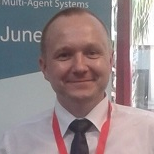Topic Menu
► Topic MenuTopic Editors



Modern Technologies and Manufacturing Systems
Topic Information
Dear Colleagues,
Technology today is evolving at such a rapid pace, enabling faster change and progress, causing an acceleration of the rate of change. The materials, methods and technologies recognized several years ago as new ones, today, often seem to be not efficient enough when compared to the market and industrial requirements. Accordingly, in the past several years, research on the development of modern conceptions of manufacturing systems has revolved around new concepts that are able to meet the assumptions of focused flexibility and the challenges of the Industry 4.0 philosophy. In this context, new practical and scientific results are of great interest and importance to mechanical engineering. Special attention is continuously given to the problems of new manufacturing technologies and modern conceptions of manufacturing systems that allow us to make high-quality products with a high level of effectiveness and a proper level of flexibility. Therefore, we would like to invite you to submit your research paper to the Topic “Modern Technologies and Manufacturing Systems”.
This Topic seeks high-quality works focusing on the following topics:
- Modern methods of machining;
- Metal-forming technologies;
- Joining technologies;
- Additive manufacturing technology;
- Laser machining technology;
- Industrial assembly technologies;
- Manufacturing engineering of composite materials;
- Manufacturing systems design for industrial applications;
- Paradigms of modern manufacturing system designs;
- Flexible and focused manufacturing systems;
- Reconfigurable manufacturing systems and other manufacturing concepts of the future;
- Advanced industrial engineering;
- Manufacturing system capacity balancing;
- Sustainable material-handling systems.
Prof. Dr. Arkadiusz Gola
Prof. Dr. Izabela Nielsen
Prof. Dr. Patrik Grznár
Topic Editors
Keywords
- technology
- machining
- metal forming
- additive technology
- laser machining
- joining and assembly technologies
- manufacturing systems
- production automation and robotization
- Industry 4.0
- advanced industrial engineering
- factory of the future
Participating Journals
| Journal Name | Impact Factor | CiteScore | Launched Year | First Decision (median) | APC |
|---|---|---|---|---|---|

Materials
|
3.4 | 5.2 | 2008 | 13.9 Days | CHF 2600 |

Processes
|
3.5 | 4.7 | 2013 | 13.7 Days | CHF 2400 |

Applied Sciences
|
2.7 | 4.5 | 2011 | 16.9 Days | CHF 2400 |

Journal of Manufacturing and Materials Processing
|
3.2 | 5.5 | 2017 | 14.2 Days | CHF 1800 |

MDPI Topics is cooperating with Preprints.org and has built a direct connection between MDPI journals and Preprints.org. Authors are encouraged to enjoy the benefits by posting a preprint at Preprints.org prior to publication:
- Immediately share your ideas ahead of publication and establish your research priority;
- Protect your idea from being stolen with this time-stamped preprint article;
- Enhance the exposure and impact of your research;
- Receive feedback from your peers in advance;
- Have it indexed in Web of Science (Preprint Citation Index), Google Scholar, Crossref, SHARE, PrePubMed, Scilit and Europe PMC.

